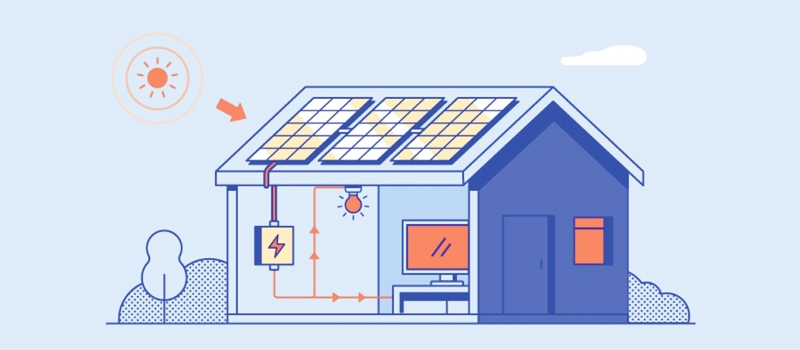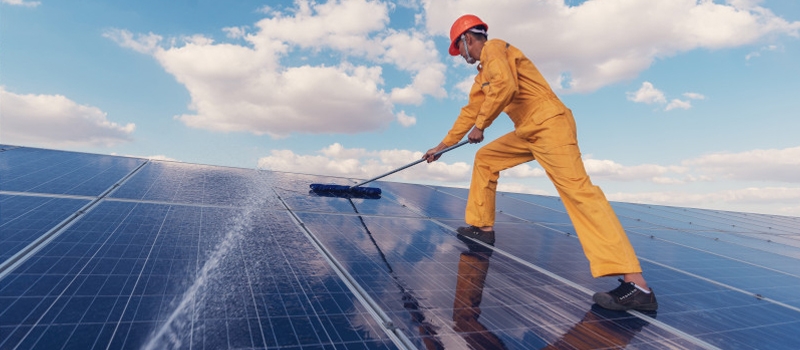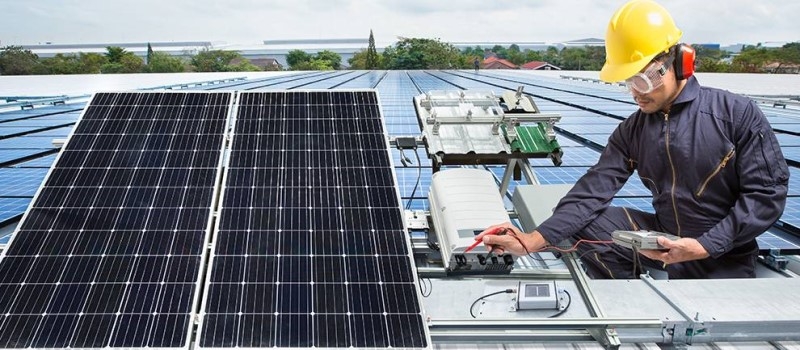With the growing global demand for renewable energy, solar panels have become an important source of energy for many homes and businesses. However, there are some common problems that both residential and commercial solar power systems can encounter that can affect the performance and efficiency of the system. In this blog, PowerHome will cover possible malfunctions with solar systems and provide some practical troubleshooting advice.
Solar Power System Overview
Before we dive into troubleshooting, let's take a brief look at how a solar power system works. In general, a home solar system consists of PV panels, an inverter (off-grid or on-grid), a charge controller, and batteries (optional).
These components each have a role to play in powering the off-grid home. The solar panels are responsible for converting sunlight into DC power; the inverter converts DC power into AC power for home or commercial use; in an off-grid system, the batteries are used to store excess power for use at night or on cloudy days; and the solar charge controller is used to manage and protect the battery.

Common Troubles and Troubleshooting
System Suddenly Stops Working
Condition: The system suddenly stops working without any output.
Cause: The system suddenly stops working may be caused by a tripped circuit breaker, blown fuse, or power grid failure.
Solution: Check whether the circuit breaker and fuse are normal, if you find any problem, please replace them in time. Check whether the power grid is normally supplied, if the grid is faulty, you need to contact the power company to solve the problem.
Example: D A's solar power system suddenly stopped working without any output. Checked the circuit breaker and fuse of the system and found that the fuse was blown. Further inspection revealed that the reason for the meltdown was water ingress in the junction box of one of the solar panels, resulting in a short circuit. She replaced the damaged junction box and ensured that all junction boxes were well sealed to prevent water ingress. After replacing the fuse, the system returned to normal operation.
Panel Output Power Decline
Condition: Panel output power is lower than expected and system power generation is reduced.
Cause: Decreased output power may be caused by the accumulation of dust, leaves, shadows, and other shading on the panel surface. In addition, panel deterioration, panel damage, or panel wiring problems may also cause a drop-in output power.
Solution: Clean the solar panel regularly to ensure that the surface is free of shading. Check the panel wiring and junction box to ensure that the connections are tight and not loose. If the problem persists, you may need to contact a professional technician for further inspection and repair.
Example: User B noticed that the output of his solar panel system was much lower than usual. Upon inspection, it was found that a large amount of bird droppings and dust had accumulated on the panel surface. These obstructions blocked the absorption of sunlight and caused the panel output power to drop. He cleaned the solar panel and removed all the shading. After cleaning, the panel output power returned to normal.

Inverter Display Error Code
Condition: Error code appears on the inverter display.
Cause: The inverter is the core component of the solar panel system and is responsible for converting DC power to AC power. If using an off-grid system, then an off-grid inverter is required. Error codes usually indicate that the inverter is experiencing problems, which may be caused by overload, abnormal voltage or high temperature.
Solution: Check the inverter user manual for the exact meaning of the error code. Check if the grid voltage is stable and make sure the load is within the rated power range of the inverter. If the error code persists, shut down the system and contact a professional technician for repair.
Example: User C found an error code "E02" on the inverter display of her solar panel system. After checking the inverter user manual, he found that the "E02" error code indicates an over-temperature fault. Further inspection revealed that the inverter cooling fan was blocked by a foreign object, resulting in poor heat dissipation. User C cleared the foreign matter from the inverter cooling fan and made sure the fan was working properly. Subsequently, the inverter returned to normal and the error code disappeared.
Battery Charging Abnormality
Condition: The battery charges slowly or not at all.
Cause: Abnormal battery charging may be caused by an aging battery, a faulty battery controller, or high battery temperature.
Solution: Check if the battery is full, if the battery is full but the voltage is still low, the battery may need to be replaced. Check if the battery controller is working properly, if the battery controller is damaged, it needs to be replaced in time. In addition, make sure the battery dissipates heat well and avoid high temperature environment.
Example: User D found that the battery of her solar panel system was charging very slowly and even not charging sometimes. After checking the batteries, she found that the batteries were aging and the internal resistance had increased. In addition, the solar charge controller showed that the battery temperature was too high, which affected the charging efficiency. User D replaced the aged battery and improved the battery cooling conditions. After the battery was replaced, the charging rate returned to normal.
Preventive Maintenance

Preventive maintenance is the key to ensuring long-term stable operation of your solar power system. Here are some suggestions for preventive maintenance:
- Regular Inspection: Inspect solar panels, inverters, batteries and other components regularly to make sure they are not damaged or worn out.
- Clean: Clean solar panels regularly to remove dust, bird droppings, and other obstructions.
- Check Electrical Connections: Ensure that all electrical connections are tight and free of looseness to avoid failures due to poor contact.
- Monitor Performance: Use a monitoring system or inverter display to monitor system performance and identify and resolve problems.
Solar energy systems provide a clean, renewable energy solution for homes and businesses. However, like all technological devices, solar panel systems can experience malfunctions. By understanding common trouble-shooting examples and troubleshooting methods, you can better maintain and care for your solar panel system to ensure its long-term stability.
(1).png)
(1).png)